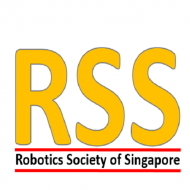


Conference Info.
REGISTRATION All the attendees must register in advance in order to participate in conference. |
SUBMISSION Please submit your full paper/abstract to us via the Electronic Submission System. |
PUBLICATION All papers will be reviewed by two or three expert reviewers. |
CALL FOR PAPERS Topics of interest for submission include, but are not limited to ... |
- Welcome to AINIT 2024 -
- About to AINIT 2024 - 2024 5th International Seminar on Artificial Intelligence, Networking and Information Technology 2024 5th International Seminar on Artificial Intelligence, Networking and Information Technology(AINIT 2024)will held in Nanjing, China during March 29-31, 2024. The conference is a forum for presenting excellent results and new challenges facing the field of Artificial Intelligence, Networking and Information Technology. It will bring together the experts, scholars, researchers and related practitioners from all around the world to exchange their research results and address open issues in Artificial Intelligence, Networking and Information Technology. AINIT 2024 sincerely welcome researchers from all over the world to participate in this efficient, high-quality and authoritative international academic exchange platform. We are pleased to invite you to submit paper and looking forward for meeting you in Nanjing, China. If you need more submission information, welcome to contact us. |  |

Important
Dates —
Full Paper Submission Date March 25, 2024 | Registration Deadline March 16, 2024 | Final Paper Submission Date March 27, 2024 | Conference Dates March 29-31, 2024 |
Publication

Submitted paper will be peer reviewed by conference committees, and accepted papers after registration and presentation will be published in IEEE( ISBN: 979-8-3503-8555-7), which will be submitted for indexing by IEEE Xplore, Ei Compendex, Scopus.
AINIT 2023 丨![]() IEEE Xplore 丨
IEEE Xplore 丨![]() EI Compendex丨
EI Compendex丨![]() Scopus
Scopus
AINIT 2022 丨![]() SPIE丨
SPIE丨![]() EI Compendex丨
EI Compendex丨![]() Scopus
Scopus
AINIT 2021 丨![]() IEEE Xplore 丨
IEEE Xplore 丨![]() EI Compendex丨
EI Compendex丨![]() Scopus
Scopus
AINIT 2020 丨![]() EI Compendex丨
EI Compendex丨![]() Scopus
Scopus
Note: All submitted articles should report original results, experimental or theoretical, not previously published or being under consideration for publication elsewhere. Articles submitted to the conference should meet these criteria. We firmly believe that ethical conduct is the most essential virtue of any academics. Hence, any act of plagiarism or other misconduct is totally unacceptable and cannot be tolerated.
Sponsor | Technically Supported by | |
|
|
|
If you have any question or inquiries, please feel free to contact us.Contact






